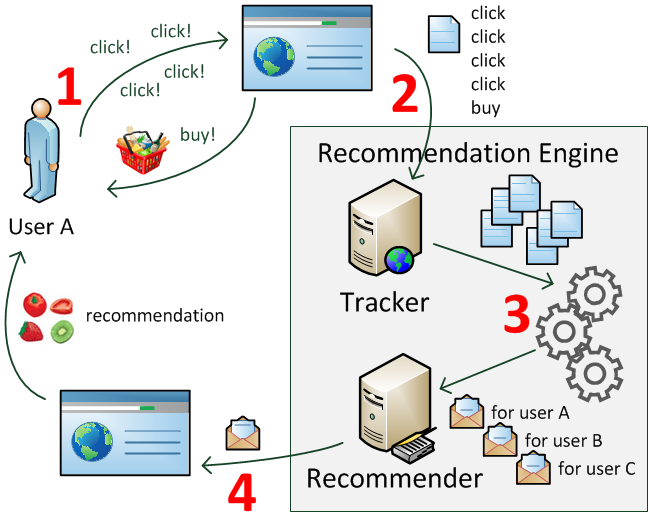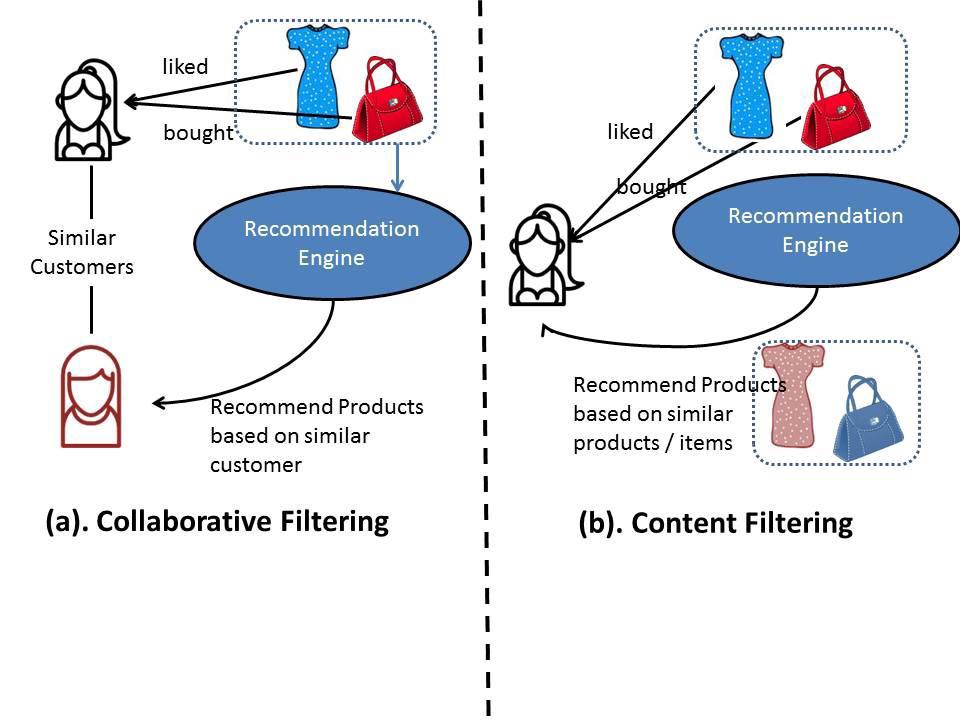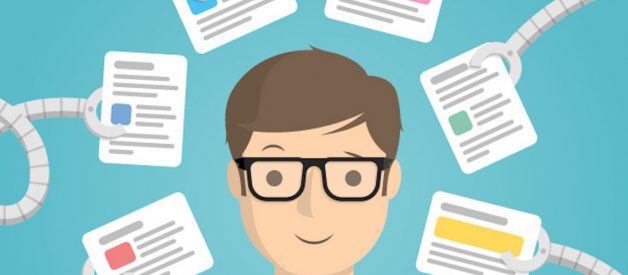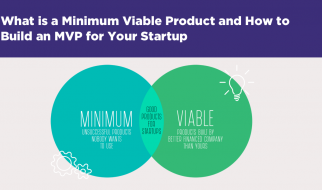In my previous blog, it broadly talks about how we could exploit NLP by extracting further values from NLG and NLU. Extending to that, it brings us to the Recommendation Engine as NLP could be a component of a Recommender system. Recommender systems could be based on an NLP module either for feature extraction or for text classification.

In this blog, we shall touch on Recommendation Engine, why is it essential in the business world context, especially so in the face of the growing amount of information on the internet and with a significant rise in the number of users. Similarly, we will not dive into the technical details as the intent of this blog is to serve the foundation understanding.
What is a Recommendation Engine/System in A.I world?
A recommendation engine is a system that suggests products, services, information to users based on analysis of data. Notwithstanding, the recommendation can derive from a variety of factors such as the history of the user and the behaviour of similar users.
Recommendation systems are quickly becoming the primary way for users to expose to the whole digital world through the lens of their experiences, behaviours, preferences and interests. And in a world of information density and product overload, a recommendation engine provides an efficient way for companies to provide consumers with personalised information and solutions.
What are the benefits of the Recommendation Engine?
A recommendation engine can significantly boost revenues, Click-Through Rates (CTRs), conversions, and other essential metrics. It can have positive effects on the user experience, thus translating to higher customer satisfaction and retention.
Let?s take Netflix as an example. Instead of having to browse through thousands of box sets and movie titles, Netflix presents you with a much narrower selection of items that you are likely to enjoy. This capability saves you time and delivers a better user experience. With this function, Netflix achieved lower cancellation rates, saving the company around a billion dollars a year.
Although recommender systems have been used for almost 20 years by companies like Amazon, it has been proliferated to other industries such as finance and travel during the last few years.
In broad terms, how does Recommendation Engine works?
Recommendation engines need to know you better to be effective with their suggestion. Therefore, the information they collect and integrate is a critical aspect of the process. This can be information relating to explicit interactions, for example, information about your past activity, your ratings, reviews and other information about your profile, such as gender, age, or investment objectives. These can combine with implicit interactions such as the device you use for access, clicks on a link, location, and dates.

There are three main types of techniques for Recommendation systems; content-based filtering, collaborative filtering, and knowledge-based system.
1. Content-based filtering
Content-based filtering is based on a single user?s interactions and preference. Recommendations are based on the metadata collected from a user?s history and interactions. For example, recommendations will be based on looking at established patterns in a user?s choice or behaviours. Returning information such as products or services will relate to your likes or views. With an approach like this, the more information that the user provides, the higher the accuracy.
Given the privacy and regulatory issues are important in some industries? services, personal metadata and individual transactional data can be missing at the outset. These issues are commonly known as ?cold start? problems for recommender systems using this approach. Cold start occurs when a recommender system cannot draw inferences for a query due to lack of sufficient information. A particular form of the content-based recommendation system is a case-based recommender. These evaluate items? similarities and have been extensively deployed in e-commerce.
A recommendation like ?products similar to this?, is a typical instance of this type of approach. Overall, these are limited though to the specific domain and the level of categorisation available.
2. Collaborative filtering
Collaborative filtering is another commonly used technique. Collaborative filtering casts a much wider net, collecting information from the interactions from many other users to derive suggestions for you. This approach makes recommendations based on other users with similar tastes or situations. For example, by using their opinion and actions to recommend items to you or to identify how one product may go well with another. ?Next buy? recommendations is a typical usage. Collaborative filtering method usually has higher accuracy than content-based filtering; however, they can also introduce some increased variability and sometimes less interpretable results. They are especially weak in the absence of previously collected data. Without meaningful information on others, it becomes harder, naturally, to participate in any single person actions.
Build better voice apps. Get more articles & interviews from voice technology experts at voicetechpodcast.com
 Source: Human for AI
Source: Human for AI
3. Knowledge-based system
Knowledge-based systems are systems where suggestions are based on an influence about a user?s needs and based on a degree of domain expertise and knowledge. Rules are defined that set context for each recommendation. This, for example, could be criteria that define when a specific financial product, like a trust, would be beneficial to the user. These do not, by default, have to use interaction history of a user in the same way as the content-based approach is, but can include these as well as customer products and service attributes, as well as other expert information. Given the way the system is built up, the recommendations can be easily explained. But building up this type of framework can be expensive. It tends to be better suited to complex domains where items are infrequently purchased or hence, data is lacking. Given this, it doesn?t suffer the same cold-start up problems as others above.
What are the common challenges a Recommender System face?
- Sparsity of data. Data sets filled with rows and rows of values that contain blanks or zero values. So finding ways to use denser parts of the data set and those with information is critical.
- Latent association. Labelling is imperfect. Same products with different labelling can be ignored or incorrectly consumed, meaning that the information does not get incorporated correctly.
- Scalability. The traditional approach has become overwhelmed by the multiplicity of products and clients. This becomes a challenge as data sets widen and can lead to performance reduction.
How do you measure your Recommendation System?
Providing relevant recommendations is the hallmark of a sound system. Conventional measurement techniques include measures of accuracy or coverage measures.
Accuracy can be described as the fraction of correct recommendations out of the total possible recommendations;
Coverage measures the number of items or users that the system is actually able to provide recommendation for.
For example, accuracy may be high at the same time as coverage is low. This could happen if the recommendation to the eligible subset were valid and accurate. This could happen if the recommendations to the suitable subset were valid and accurate, while many were excluded as few users had rated an item.
User Experience is KEY
In general, recommendation engines improve with more information. Recommendation engines that display smart, intuitive, visualisation techniques for their results, are much likelier to ensure repeat visits. As such, recommendation engines that continue with you, along with your quest for more and more information and products, will be to gather more and more of the underlying information for usage later.
Creating a self-sustaining ever-improving environment for the recommendation engine relies on much more than preparing the engine itself.
Common Use Cases
Let?s retake the example of Netflix. The recommendation engine is core to Netflix. More than 80% of the TV shows that people watch on the platform are discovered through a recommendation system. What?s unique about the system is that it doesn?t look at broad genres, but rather into nuanced threads within the content. The aim is to help break viewers break preconceived notions and find shows that they might have chosen initially.
Netflix?s recommendation engine uses ?three-legged stool? working concept. The first leg is the history of what Netflix members watched. Tags are done by Netflix employees who understand everything about the content and proprietary machine learning algorithms that take all of the data and put things together.
Such recommendation engines working concept can serve as an intelligent decision support system that promotes sales activities of products and services for other industries too. These may improve the efficiency of sales representatives or create automatic decision-making processes for the clients themselves.
Recommendation engines can also be deployed directly for consumers. For example, Credit Karma is a fintech startup from California that provides free access to credit scores and full credit history, making money from a personalised recommendation on credit cards, loans and other products to their users. Its recommendation system relies on millions of data about users? credit history and current situations, to propose products that not only a user can be interested in, but also has a high probability of being approved for, and therefore has a long-term benefit.
In conclusion, recommendation systems are increasingly integrating into all walks of human life and decision-making processes. This phenomenal is no different in other industries, especially consumer-facing companies, where information overload, rising client expectations and cost reduction are driving ever more instances of recommendation engines. Ultimately, it serves as both a tool to improve the client experience and maximise the efficiency of advisors.
References:
- ?HOW DO RECOMMENDATION ENGINES WORK? AND WHAT ARE THE BENEFITS??, by marutitech.com, link here.
- ?7 Product Recommendation Engines (and When to Use Them)?, by blog.ometria.com, link here.
- ?Introduction to Recommendation Engine?, by Oracle + DataScience.com, link here.
From the writer: I welcome your thoughts and reactions and look forward to following this exciting AI landscape together for the coming years. Feel free to give me claps for my blog you liked. It?s a source of great encouragement and energy to continue my blogging!


